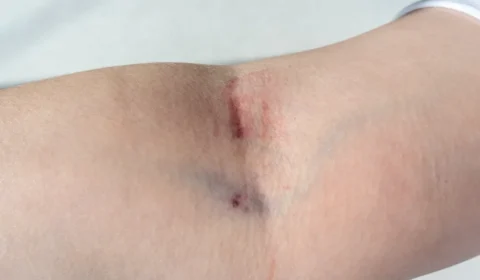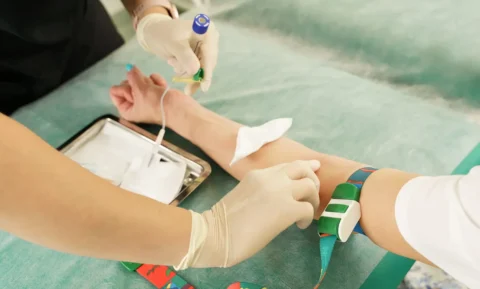Master the art of Semaglutide injection with our step-by-step guide. Ensure safe and effective diabetes treatment for your patients
As a nurse, you play a vital role in helping your patients manage their health and well-being. One way to serve your patients effectively is by mastering the proper techniques for administering various medications.
Semaglutide, a relatively new medication used for treating type 2 diabetes and obesity, is one such drug that requires specific knowledge and skills to inject correctly.
In this article, we’ll guide you through the process of injecting semaglutide safely and effectively so that you can confidently provide top-notch care for your patients.
Understanding how to properly administer semaglutide injections not only ensures patient safety but also empowers them with the tools they need to take control of their health journey.
By learning about semaglutide’s mechanisms of action, preparing for injection, selecting an appropriate injection site, executing the procedure step-by-step, managing potential side effects, and educating your patients on adherence strategies – you’ll be able to optimize outcomes for those under your care.
Understanding Semaglutide
Semaglutide is an injectable prescription medicine that belongs to a class of drugs called glucagon-like peptide-1 (GLP-1) receptor agonists. It works by mimicking the action of GLP-1, a hormone responsible for regulating blood sugar levels.
By doing so, semaglutide helps lower blood sugar levels in adults with type 2 diabetes when used alongside diet and exercise. The FDA has approved semaglutide under two brand names: Ozempic (a once-weekly injection) and Rybelsus (a once-daily oral tablet).
As a health care professional involved in the injection process of semaglutide, it’s essential to be familiar with the potential side effects and precautions associated with this medication. One common concern is injection site reactions such as pain, redness, or swelling at the site where the medicine is injected.
To minimize these reactions, rotate injection sites each time you administer the medication – for example, alternate between different areas on the abdomen or thigh. Additionally, always follow proper techniques for subcutaneous injections and educate your patients on recognizing and managing any potential side effects associated with semaglutide treatment.
By staying informed about this medication and its administration process, you’ll be better equipped to provide optimal care to your patients living with type 2 diabetes.
Preparing to Inject Semaglutide
Before administering the injection, it’s crucial to gather all necessary supplies and ensure proper storage, handling, and inspection of the medication for a safe and effective process.
Preparing to inject semaglutide involves a few key steps that help ensure you’re administering the correct dosage form and following the appropriate injection schedule. Keep in mind that semaglutide should always be stored in its original container within the refrigerator between 2°C and 8°C (36°F-46°F) until ready for use.
To help make this process more engaging, here’s a table outlining the necessary supplies and steps:
| Supplies Needed | Steps to Prepare |
| Semaglutide pen | 1. Check expiration date |
| Disposable needles | 2. Inspect solution |
| Alcohol swabs | 3. Attach needle |
| Sharps container | 4. Prime pen if necessary |
| Injection site | 5. Dial dose |
As you prepare for each injection, remember that disposable needles are only meant for one-time use; therefore, using new needles with each administration will prevent contamination and potential infection at the injection site.
Follow your healthcare facility’s protocol regarding sharps disposal to maintain safety standards for both patients and staff alike. By paying close attention to these details when preparing to inject semaglutide, you’ll be serving your patients with a safe, efficient, and compassionate approach towards their diabetes management journey.
Choosing an Injection Site

Choosing the right spot for your injection can make all the difference in your patient’s comfort and overall experience. When injecting semaglutide, you have three primary injection sites to choose from: the thigh, abdomen (at least two inches away from the belly button), or the upper arm.
To ensure a comfortable and effective injection, it’s essential to rotate between these sites each time you administer the medication. The benefits of rotating injection sites include minimizing discomfort and skin irritation and reducing potential tissue damage over time.
Before selecting an injection site, visually inspect the area for any signs of bruising, swelling, or infection. Once you’ve chosen a suitable location, cleanse it thoroughly with an alcohol swab and allow it to air dry before proceeding with the injection.
Remember to always use a new needle for each shot. Discard used needles and needle caps safely according to your facility’s guidelines. By carefully choosing an appropriate site and following proper technique, you’ll provide not only optimal treatment but also compassionate care that extends far beyond administering medication.
Step-by-Step Guide to Injecting Semaglutide
Now that you’ve chosen the ideal injection site, let’s walk through the steps to ensure a smooth and successful process when administering this vital medication. As a nurse, it’s essential to provide patients with a clear step-by-step guide on injecting semaglutide.
Step 1
Start by ensuring proper handwashing and hygiene practices are followed before assembling the semaglutide pen. If necessary, prime the pen according to manufacturer instructions.
Step 2
Next, carefully dial the correct dose using the medication vial and make sure your patient is comfortable with their chosen injection site.
Step 3
Before injecting semaglutide, clean the injection site with an alcohol swab and wait for it to dry completely; this will help minimize any risk of infection.
Step 4
Once everything is set up correctly, pinch a fold of skin at the selected area and insert the needle at a 90-degree angle while continuing to hold onto that skin fold.
Step 5
Press down on the injection button until it stops clicking or reaches its limit; then hold for an additional five seconds before slowly withdrawing the needle. Make sure to dispose of used needles and sharps in an appropriate container following safety guidelines.
With these careful steps in place, you can confidently administer this important medication while providing your patient with care and support throughout their treatment journey.
Managing Injection-Related Side Effects
Dealing with injection-related side effects can be a bit of a challenge, but don’t worry – there are ways to minimize discomfort and manage any reactions you might experience. As nurses who inject semaglutide to help patients regulate their blood sugar levels, it’s essential to be aware of potential side effects and have strategies in place to address them.
- Apply ice or cold compresses: Applying ice or a cold compress to the injection site immediately after administering semaglutide can help reduce redness, swelling, and pain. Make sure to wrap the ice or cold pack in a cloth before applying it to the skin for about 10-15 minutes.
- Rotate injection sites: To prevent localized irritation, advise your patients to rotate their injection sites each time they administer semaglutide. This includes alternating between different areas on their body (e.g., abdomen, thigh) and avoiding injecting into the same spot repeatedly.
- Encourage over-the-counter pain relief: If your patient is experiencing significant discomfort from the injection site reaction, suggest taking an over-the-counter pain reliever such as acetaminophen or ibuprofen as directed by their healthcare provider.
Tips for Patient Adherence and Education
To ensure patient adherence when teaching them how to inject semaglutide, it’s crucial for nurses to provide clear instructions, helpful resources, and consistent encouragement. By doing so, we empower our patients with the knowledge and confidence required for successful self-management of their condition.
To help you engage your patients effectively, consider incorporating the following tips into your educational sessions:
| Tips for Patient Education | Strategies for Nurses |
| Emphasize the importance of timely injections | Explain the benefits of maintaining a regular injection schedule and discuss potential consequences of non-adherence |
| Teach proper injection technique | Demonstrate step-by-step instructions on how to inject semaglutide safely and accurately; encourage questions |
| Offer personalized strategies | Help patients develop tailored routines that integrate injections seamlessly into daily life |
| Connect patients with resources | Provide access to educational materials (e.g., pamphlets), support networks (e.g., local diabetes groups), or websites |
By implementing these tips in your practice as a nurse, you will foster stronger connections between healthcare providers and their patients while promoting positive outcomes through improved patient adherence.
Remember: every small effort you make towards educating patients about injecting semaglutide can lead to significant improvements in their overall health and well-being.
Implementing Semaglutide and Tirzepatide into your Aesthetic Practice
Incorporating semaglutide and tirzepatide into your aesthetic practice can elevate the level of care you provide, offering patients a comprehensive approach to weight management and overall well-being.
And to help you with this, we proudly introduce this online course:
“Implementing Semaglutide and Tirzepatide into your Aesthetic Practice”
Your golden ticket to unlocking the full potential of your practice!
Led by Nurse Practitioner Nikki Plourde, a seasoned expert with a decade of experience in Family Medicine and successful application of weight management medications, this course will guide you through each stage of implementing a successful weight management program.
Enrolling in this course gives you:
- Comprehensive understanding of Semaglutide and Tirzepatide, their contraindications, mechanisms, side effects, dosing, and monitoring.
- Complete online lesson plan with a recorded PowerPoint presentation packed with all the critical knowledge you need.
- Dosing conversion instructions between Semaglutide and Tirzepatide.
- A tutorial on ordering medications, complete with a real-world online example.
- Innovative business and marketing ideas along with a cost breakdown and ROI evaluation.
- Guidelines for patient appointments and follow-ups, including pre-appointment questionnaires.
- Sample protocols, consent forms, SOAP notes, patient questionnaires/handouts, and medication safety sheets.
- In addition, your course purchase entitles you to group rate pricing for Semaglutide!
Don’t let your practice be left behind. Equip yourself with the knowledge and tools needed to offer a robust weight management solution and watch your practice grow. With ongoing support, your success is just around the corner.
Act now! Seize this opportunity and transform your aesthetic practice today!






